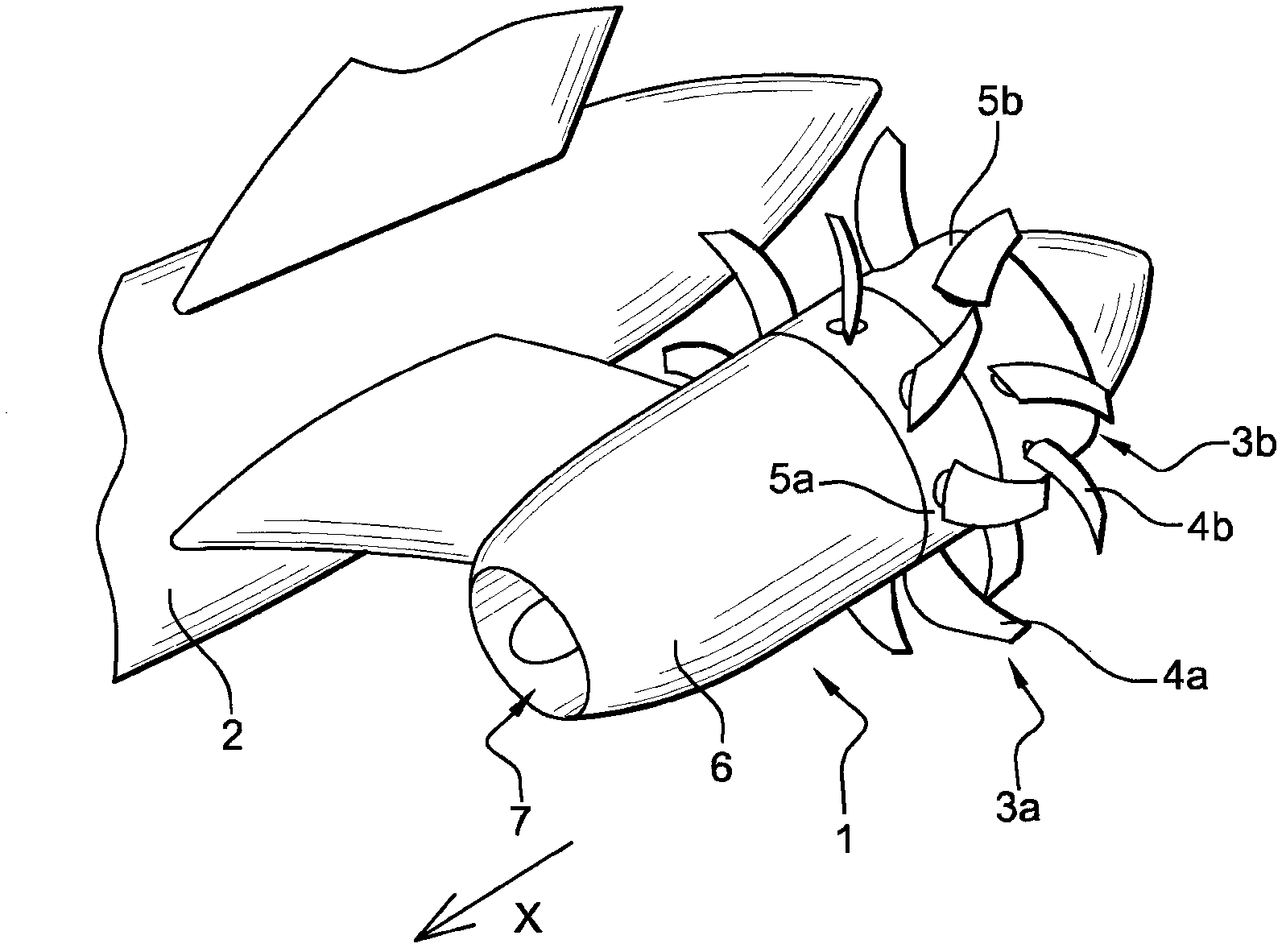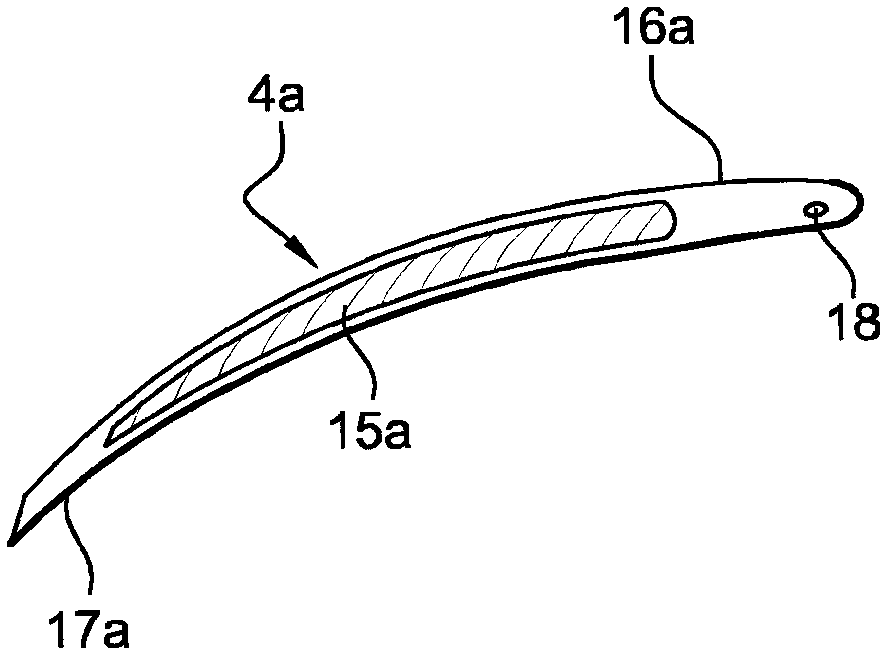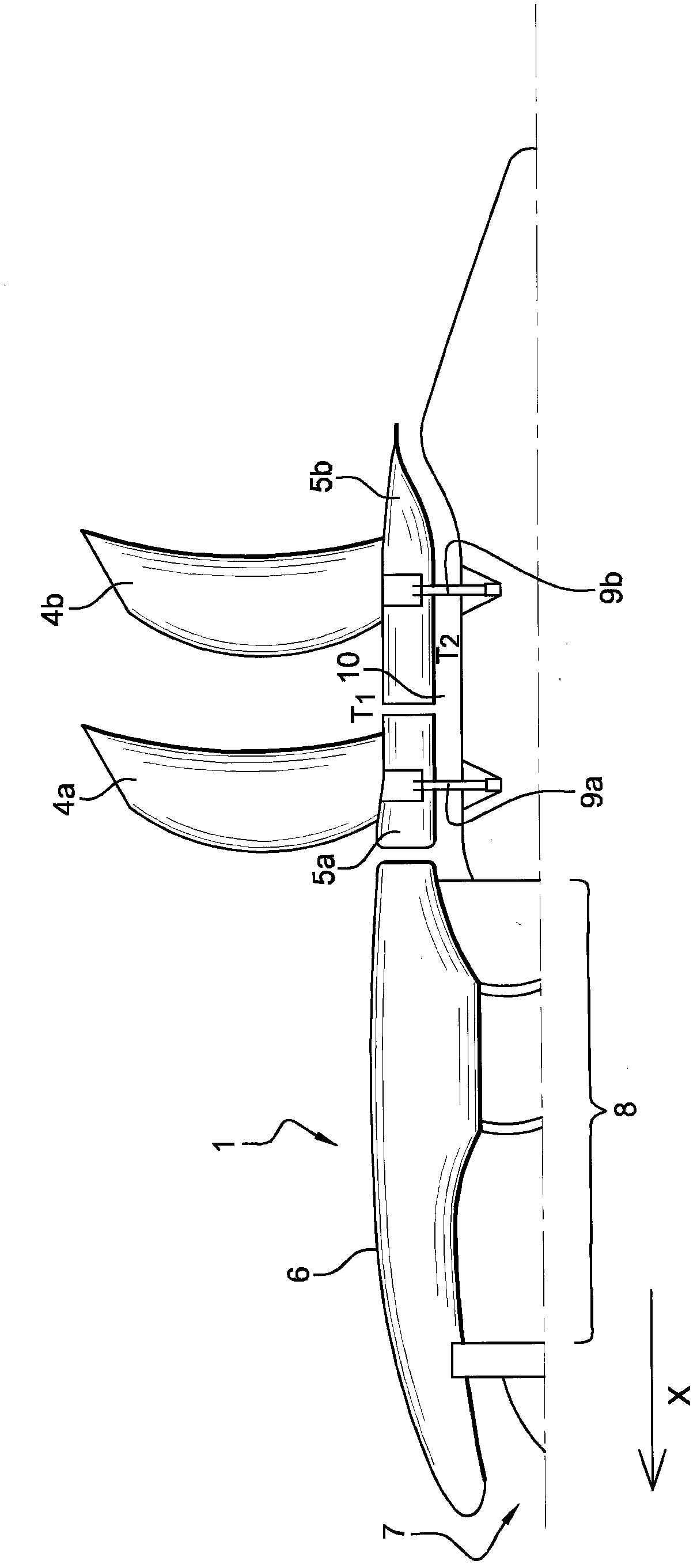Deicing device for propfan-type propeller blades
A technology for propeller fans and blades, applied in deicing devices, propellers, transportation and packaging, etc., can solve the problems of brush wear, high maintenance costs, and shortened life.
- Summary
- Abstract
- Description
- Claims
- Application Information
AI Technical Summary
Problems solved by technology
Method used
Image
Examples
Embodiment Construction
[0036] The present invention is intended to be used for example as figure 1 Shown in is an aircraft propulsion unit 1 of the so-called "propeller fan" type. Such propulsion units are envisioned for use in future aircraft. In the example of implementation illustrated here, two propfan propulsion units 1 are attached on both sides of the rear of the aircraft fuselage 2 by means of engine propulsion unit pylons.
[0037] Here, each propfan propulsion unit 1 comprises two counter-rotating rotors 3 a , 3 b each comprising a set of blades 4 a , 4 b equidistant and arranged at the rear of the propulsion unit 1 . The blades 4a, 4b of each rotor 3a, 3b protrude from an annular crown 5a, 5b moving with this rotor, the outer surface of which is arranged in continuity with the shroud part 6 of the propulsion unit.
[0038] Such as figure 2 Shown schematically in , the propfan propulsion unit 1 comprises an air inlet 7 feeding a turbine 8 . This turbine 8 comprises an axial portion dr...
PUM
 Login to View More
Login to View More Abstract
Description
Claims
Application Information
 Login to View More
Login to View More - R&D Engineer
- R&D Manager
- IP Professional
- Industry Leading Data Capabilities
- Powerful AI technology
- Patent DNA Extraction
Browse by: Latest US Patents, China's latest patents, Technical Efficacy Thesaurus, Application Domain, Technology Topic, Popular Technical Reports.
© 2024 PatSnap. All rights reserved.Legal|Privacy policy|Modern Slavery Act Transparency Statement|Sitemap|About US| Contact US: help@patsnap.com










